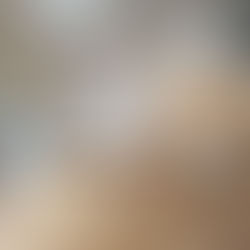
Mar 18, 2025
In the world of timber floor restoration in Melbourne, you often hear terms like "sanding," "polishing," "staining," and "limewashing." But one powerful technique that can dramatically transform your floors, especially darker ones, is timber bleaching.
So, what exactly is timber bleaching?
Timber Bleaching: A Chemical Transformation for Lighter Floors
Unlike staining or limewashing, which add pigment to the timber's surface or grain, timber bleaching is a chemical process that removes or lightens the natural colour pigments (tannins) within the wood fibres themselves. The result is a significantly paler, often blonde, or neutral tone, that can't be achieved with simple sanding or light stains alone.
Think of it like bleaching your hair: it chemically alters the natural colour of the strands to make them lighter. Timber bleaching does the same for your floorboards, offering a truly transformative effect.
Why Choose Timber Bleaching for Your Melbourne Home?
Bleaching your timber floors is typically chosen for very specific aesthetic goals:
Achieving Extreme Lightness: If you desire a truly light, airy, almost white or pale oak look, especially from naturally dark or red timbers like Jarrah, Spotted Gum, Brushbox, or Red Gum, bleaching is the most effective method. It neutralises the deep, warm, or reddish undertones that are inherent in these species, making them suitable for bright, contemporary interiors.
Creating a Scandinavian or Modern Minimalist Aesthetic: These styles heavily rely on very light, natural, and muted tones. Bleaching provides the perfect canvas for such designs, making spaces feel larger, brighter, and more serene.
Preparing for Limewash: While limewashing adds a white pigment, applying it over a pre-bleached floor results in a much purer, cleaner white or lighter grey limewash. Without bleaching, the natural undertones of darker timber can still show through the limewash, creating a creamier or pinkish hue. Bleaching ensures a truer limewashed colour.
Unifying Disparate Timbers: In homes with extensions or mixed timber species, bleaching can help to bring a more uniform, lighter appearance across different types of wood that naturally have varying colours.
How Does Timber Bleaching Work? (The MyFlooring Process)
The process of bleaching timber floors is complex and requires professional expertise due to the chemical nature involved. It's not a DIY job!
Preparation: The floor must first be expertly sanded back to bare timber. All old finishes, waxes, oils, and deep impurities need to be completely removed for the bleaching agents to penetrate evenly and effectively. Our virtually dustless sanding ensures a clean, ready surface.
Chemical Application: A specialised, two-part bleaching solution is carefully applied to the timber. This solution initiates a chemical reaction with the wood's natural tannins, causing them to lighten. MyFlooring uses specially formulated bleaching systems that are designed to be effective while minimising harmful VOCs.
Reaction Time: The bleaching agent is left to react for a specific period, depending on the timber type and the desired level of lightness. This may involve multiple applications for very dark or stubborn timbers.
Neutralisation: Once the desired lightening is achieved, the floor is thoroughly neutralised to stop the chemical reaction and remove any residues. This is a critical step to ensure the long-term integrity of the timber.
Drying & Final Sanding: The floor must then be allowed to dry completely (which can take 24-48 hours). A final light sanding (buffing) is typically performed to ensure a perfectly smooth surface before the protective finish is applied.
Finishing: Finally, a durable, non-yellowing top coat, such as water-based polyurethane or a Rubio Monocoat oil, is applied to protect the newly lightened timber and seal its beautiful new colour.
Bleaching vs. Limewashing: What's the Difference?
This is a common point of confusion:
Bleaching: Alters the natural colour of the wood by chemically lightening its pigments. The wood itself becomes lighter.
Limewashing: Applies a translucent white pigment that sits in the grain of the wood, allowing some of the natural timber colour to show through. It adds a white layer, but doesn't fundamentally change the underlying wood's colour.
While bleaching changes the timber's core colour, limewashing adds a decorative layer. Often, for the purest white or pale limewashed look, timber is bleached first, and then a limewash (tinted oil or polyurethane) is applied over the top.
Trust MyFlooring for Expert Timber Bleaching in Melbourne
Timber bleaching is a highly specialised service that requires precision, knowledge of timber chemistry, and professional equipment to achieve safe, even, and stunning results. Attempting this as a DIY project can lead to uneven patches, damage to the timber, or safety hazards.
At MyFlooring, our team in Carnegie, Victoria, has extensive experience in timber bleaching dark floors like Jarrah and Spotted Gum, transforming them into the light, airy spaces our clients dream of. We understand the nuances of this process and guarantee a professional finish that will dramatically enhance your home's aesthetic.
If you're considering a truly light transformation for your timber floors, contact MyFlooring today for a free consultation. We'll assess your timber, discuss the possibilities of bleaching, and provide an expert recommendation for your unique project.
If you're curious
See our Previous Work
We've completed a range of staining projects across Melbourne.
Click on any post below to see the results and be guided to our full gallery.










